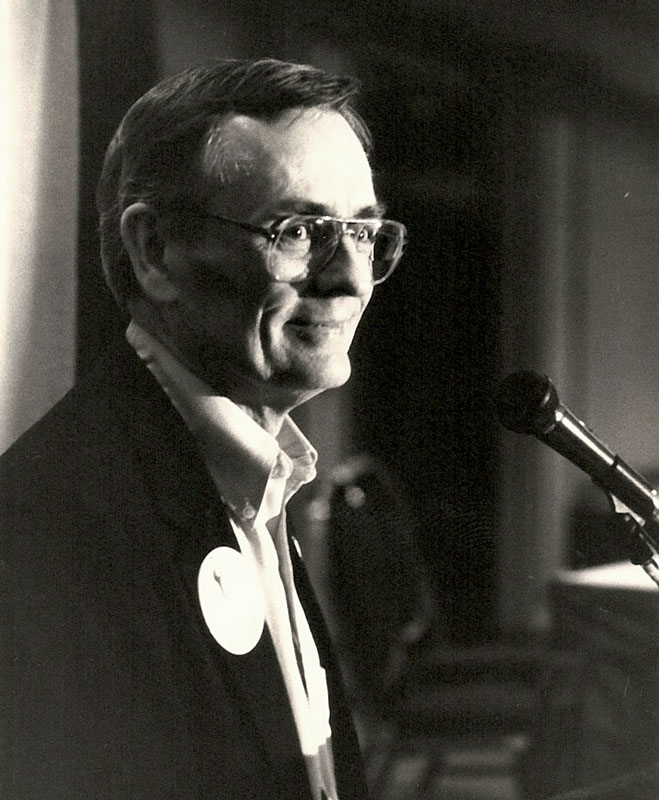Along Came Lund
“I don’t really have an interest in Aleister Crowley,” Lund told the warehouse owner and Martin Starr. “I have an interest in all types of superstition, hallucinations, self-deception, that sort of thing.” When the warehouse owner called, briefly described the books, and asked Lund if he’d be interested in buying them, Lund recalled telling the man, “It’s not really my line, but I know a little bit about Aleister Crowley and I’ll make you an offer for them. I made him an offer for what was a great deal of money in those days.”
“Sometime after I bought this collection,” Lund told Starr, “a friend of mine in The Detroit News, a man named Bill Noble, who had written a couple of pieces about my magic collection, called me up and said, ‘What’s new?’ and I told him about finding this Crowley material.”
“Black Magic Once Detroit Cult: Lives Ruined Decades Ago by Sorcerer Aleister Crowley,” the first of several articles by Noble, appeared in the Sunday edition of The Detroit News on January 26, 1958. A mixture of fact, misstatement, and speculation, it was sensational journalism at its best. Four days later, Lund wrote to his friend and fellow magician Jay Marshall, “One of the believers called me at home a couple of days ago, after the Crowley piece appeared in the paper, and said I would shortly receive instructions from Crowley’s ‘magical son’ as to how and when I would be required to ship the collection to National Headquarters, in California, under penalty of death if I disobeyed.”
Lund appeared to enjoy the threat. “This letter,” he wrote to Marshall, “will inform my widow that you are to have my autographed copies of [several magic books] in the event of my sudden demise.”
Another call came in from Karl Germer, who claimed to be Crowley’s “spiritual son.”
Germer, a long-time associate of Crowley and member of the O.T.O., then wrote two letters to Lund. The first explained how an acquaintance had sent him “the clipping” from The Detroit News and given him Lund’s home address. He offered his version of how “Crowley gave to the Leonard Warehouse in Detroit two trunks containing valuable books and manuscripts.” In Germer’s words, “These two trunks disappeared in a mysterious way—by ‘black magic’?”
Germer stated that he had visited Detroit in 1926 but “could not get any useful information from the warehouse people.” He also asked Lund for a list of the contents of the trunks, being very specific in his request. “What I need is (a) titles, names, and the type of bindings of the printed books; (b) the same, as far as is possible for the MSS.” In his second letter, he thanked Lund for allowing him to have “first choice” of the material once he received the list.
Nothing came of this promise, however, as eager inquiries poured in for two months following the appearance of Noble’s article: letters from an antiquarian book dealer in London; letters from a dealer in Baltimore who had been told about the Crowley material by a friend of Lund’s; brief negotiations with Samuel Weiser, the foremost dealer in occult books in the East; calls from those who had read the article or had been alerted to the discovery by the person who had first contacted Germer. One of these eager inquirers was a collector named Philip Kaplan, who lived in Long Island City, New York.
Lund couldn’t recall how Kaplan initially contacted him, but in 1983 he remembered that they’d had phone conversations and Kaplan was “very pleasant.” Kaplan, he learned, already owned an extensive collection of Crowley material, including more than 100 photographs of Crowley’s paintings and drawings.
Lund was partial to Kaplan because, as he later told Starr, “I do not like institutions. I don’t like any institution, including this place, which is my own institution.” He was referring to the American Museum of Magic, founded by Lund and his wife in 1976. They conceived the idea of turning his magic collection into a museum, in part to separate it from their home life. They were unsuccessful. Once they made the decision, the project enveloped their lives.
When told that Kaplan had sold the Crowley books and manuscripts to the Harry Ransom Center at the University of Texas in Austin for $17,000, Lund said, “You just caused a great lump in my throat. I sold it for very, very substantially less than $17,000 … I sold it for less than $2,000.”








